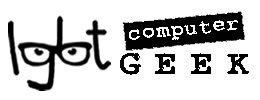We’ve all been in a situation when your PC is doing something it isn’t supposed to do. When you call someone for help, they often respond “that’s not possible.” With the built-in Problem Steps Recorder (PSR) feature you can show them that not only is it possible, it is actually happening. Problem Steps Recorder is available now in Windows 7, 8, 8.1 and 10.
Once you know how to use the Problem Steps Recorder in Windows, you’ll be able to record exactly what your computer is doing wrong so lgbt computer geek or your best friend can see what is going wrong.
Problem Steps Recorder will record every click and keypress, take screen grabs, and package everything up into a single zipped file when you’re finished, ready for emailing. It’s quick, easy and effective, and can save many hours of troubleshooting time. Think of PSR as an old fashioned tape recorder or VCR.
-
Make sure you remember which steps you took to create the problem. Practice, if need be, until you figure out just how to show us or your guru friend what’s been happening. So before you start the recording, think about the process involved in producing whatever issue you’re trying to demonstrate. For example, if you’re seeing a strange message when saving a new document in PowerPoint, you would want to make sure you’re ready to open PowerPoint, type a few words, navigate to the menu, save the file, and then, hopefully, see the error message pop up on the screen.
In other words, you should be prepared to properly reproduce whatever problem you’re seeing so Problem Steps Recorder can catch it happening.
Don’t forget that anything appearing on the screen, even fleetingly, may be recorded – so now isn’t the time for checking your bank balance.
-
Start PSR
-
Close any open windows other than Problem Steps Recorder.
Problem Steps Recorder will make screenshots of what’s on your computer screen and include those in the recording you save and then send off for support. Unrelated open programs or windows in the screenshots could be distracting.
-
Click the Start Record button in Problem Steps Recorder.
You can record, pause, or play. Problem Steps Recorder will now log information and take a screenshot every time you complete an action, like a mouse click, program opening or closing, etc. Complete whatever steps necessary to show the problem you’re having.
If you need to pause the recording for some reason, click the Pause Record button. Click Resume Record to restart the recording.
During a recording, you can also click the Add Comment button to highlight a section of your screen and manually add a comment. This is really useful if you’d like to point out something specific that’s occurring on screen to the person who’s agreed to help.
-
Click the Stop Record button in Problem Steps Recorder to stop recording your actions.
-
In the File name: textbox on the Save As window that appears, give a name to this recording and then click the Save button.
A single ZIP file containing all of the information recorded by Problem Steps Recorder will be created and saved to your Desktop, unless you chose a different location.
-
You can now close Problem Steps Recorder.
-
The only thing left to do is get the file you saved to the person or group helping you out with your problem.
Depending on who’s helping you (and what kind of problem you’re having right now) options for getting the Problem Steps Recorder file to someone might include, attaching the file to an email and sending it to me or your computer expert friend, copying the file to a flash drive etc.
Windows 7: Click Start, then type
psr
and press Enter.
In Windows 8 and 8.1, use keyboard shortcut WINDOWS KEY + W to open Settings Search, type “psr” into Search box and then click “Record steps to reproduce a problem”.
In Windows 10:
On the desktop screen, click inside the Search bar present next to the Start button (the Windows logo at the bottom left hand side of the screen).
Type PSR and from the displayed suggestions, click Steps Recorder.

